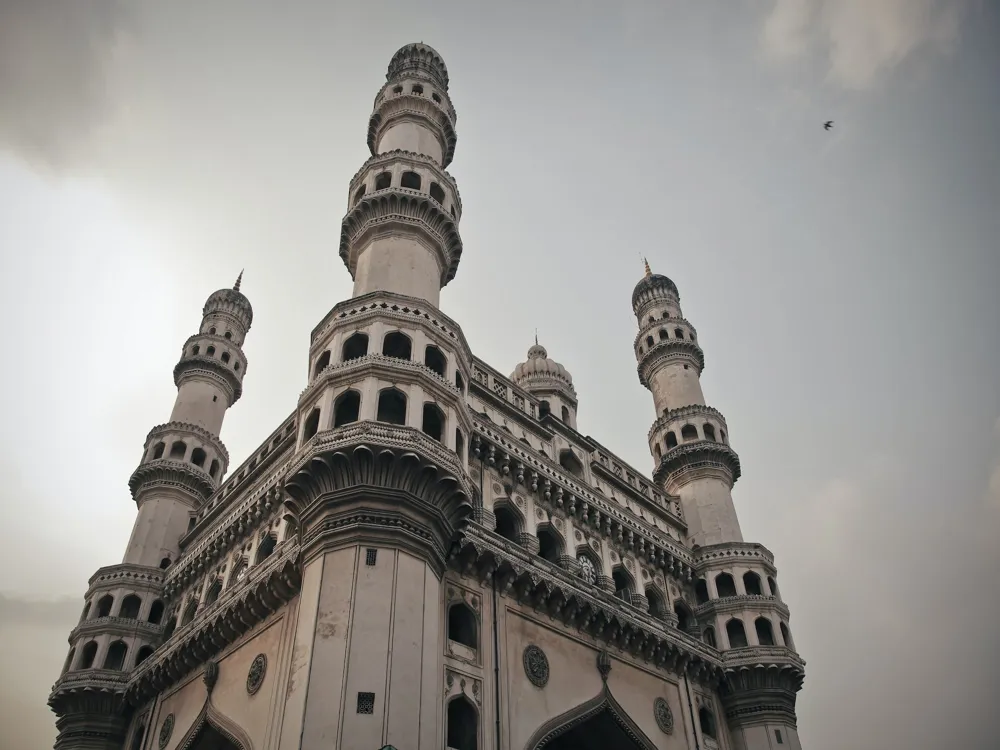Adilabad, a picturesque town in Telangana, India, is a blend of rich cultural heritage and enchanting natural beauty. Nestled in the northern part of Telangana, it serves as a gateway to South and Central India. Historically, Adilabad was known as Edlabad during the rule of Qutub Shahis. The town's name is derived from Adil Shah, the ruler of Bijapur. Adilabad's diverse culture is a result of the confluence of Telugu and Marathi influences, owing to its geographical location near Maharashtra. The region is blessed with an abundance of natural resources and is surrounded by dense forests, making it a haven for nature lovers. The Godavari River, India's second-longest river, flows through the district, enriching the land with its fertile soils. The town's economy is predominantly based on agriculture and forestry, with cotton, rice, and maize being the major crops. Adilabad also has a significant tribal population, with communities like Gonds and Kolams adding to the cultural mosaic. Festivals like Nagoba Jatara and Dandari bring out the rich tribal traditions and are a spectacle to behold. Adilabad's history is a tapestry of various dynasties and cultures. It was once a part of the Mauryan Empire and later came under the rule of the Satavahanas, Vakatakas, and Chalukyas, each leaving an indelible mark on the region's cultural and architectural landscape. The town also witnessed the rise of the Kakatiyas, who were known for their patronage of art and architecture, and later the Mughals and the Nizams, which shaped its socio-cultural identity. The district is endowed with lush greenery, cascading waterfalls like the famous Kuntala and Pochera, and diverse wildlife in sanctuaries such as Kawal and Pranahita. These natural retreats offer a perfect escape from the hustle and bustle of city life, making Adilabad an ideal destination for nature enthusiasts and wildlife photographers. The architecture of Adilabad is a beautiful amalgamation of various styles influenced by the dynasties that ruled the region. The historical structures in Adilabad are a testament to its rich architectural heritage. The town's architecture is characterized by a mix of traditional Hindu, Islamic, and modern styles. Adilabad is home to several ancient temples and mosques, each narrating a story of the past. The Basar Saraswathi Temple, an ancient Hindu temple dedicated to Goddess Saraswathi, stands as a fine example of Chalukyan architecture with its intricate carvings and detailed sculptures. Similarly, the Kadam Dam, though a functional structure, reflects the engineering prowess of its era. The Nirmal Fort, perched on a hillock, offers a panoramic view of the region. Its architecture displays a blend of Mughal and Persian styles, with imposing walls and robust bastions. The Mancherial Fort, though now in ruins, tells tales of the grandeur of the past. In contrast to the ancient structures, modern architecture in Adilabad is evolving. Contemporary buildings, designed with sustainability in mind, are slowly becoming a part of the town's skyline. This blend of old and new architectural styles makes Adilabad a unique destination for architecture enthusiasts. The government and local communities are increasingly involved in preserving and restoring the architectural heritage of Adilabad. Efforts are being made to maintain ancient structures, keeping their historical significance intact while adapting them to modern needs. The ideal time to visit Adilabad is between October and March when the weather is pleasant, making it perfect for sightseeing and outdoor activities. The monsoon season, though humid, brings out the natural beauty of the region's waterfalls and forests. Adilabad's cuisine is a delightful blend of Telugu and Marathi flavors. Don't miss out on trying local delicacies like Pesarattu (a type of dosa), Sarva Pindi, and sweets like Puran Poli. The town also offers savory street food that reflects its culinary diversity. Adilabad is well-connected by road and rail. The nearest airport is in Hyderabad, from where you can take a bus or train. Local transportation includes buses, auto-rickshaws, and taxis. Renting a car is a convenient option for exploring nearby attractions. Respecting local customs and traditions is important. Dress modestly, especially when visiting religious sites. It's also recommended to learn a few basic Telugu or Marathi phrases to interact with locals, enhancing your travel experience. While Adilabad is generally safe, it's advisable to take standard safety precautions. Avoid isolated areas at night, and keep your belongings secure. In forested areas, always have a guide and follow safety guidelines to ensure a safe and enjoyable experience. Adilabad is accessible by various modes of transport. The nearest major city is Hyderabad, which is well-connected by air, road, and rail to major Indian cities and towns. The nearest airport is Rajiv Gandhi International Airport in Hyderabad, about 280 kilometers away. From the airport, one can hire a taxi or take a bus to reach Adilabad. Adilabad has its railway station, Adilabad Railway Station, which is well-connected to major cities in India. Trains are a convenient and affordable option to reach Adilabad. Adilabad is well-connected by road to major cities and towns in Telangana and neighboring states. State-run buses, as well as private buses, operate regularly in Adilabad. For those who prefer to drive, the roads are well-maintained, offering a scenic journey. Read More:Overview of Adilabad, Telangana
Historical Significance
Natural Beauty and Wildlife
Architecture of Adilabad
Religious Structures
Fortifications and Palaces
Modern Architecture
Preservation Efforts
Tips When Visiting Adilabad
Best Time to Visit
Local Cuisine
Transportation Tips
Cultural Etiquette
Safety Precautions
How To Reach Adilabad
By Air
By Train
By Road
Pranahita Wildlife Sanctuary
Adilabad
Telangana
NaN onwards
View adilabad Packages
Weather :
Tags : Wildlife
Best Time : October - March
Planning a Trip? Ask Your Question
Adilabad Travel Packages
View All Packages For Adilabad
Top Hotel Collections for Adilabad

Private Pool

Luxury Hotels

5-Star Hotels

Pet Friendly
Top Hotels Near Adilabad
Other Top Ranking Places In Adilabad
View All Places To Visit In adilabad
View adilabad Packages
Weather :
Tags : Wildlife
Best Time : October - March
Planning a Trip? Ask Your Question
Adilabad Travel Packages
View All Packages For Adilabad
Top Hotel Collections for Adilabad

Private Pool

Luxury Hotels

5-Star Hotels

Pet Friendly






















